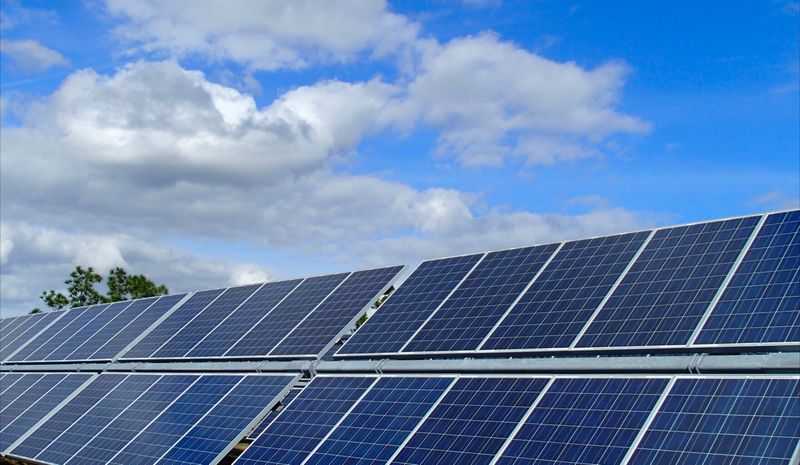
Global renewable electricity capacity is expected to more than double by 2030, according to the International Energy Agency’s (IEA) medium-term outlook. The surge is primarily driven by solar photovoltaic (PV) growth, although wind, hydropower, bioenergy, and geothermal energy are also playing key roles.
In its flagship report Renewables 2025, the IEA forecasts an increase of 4,600 gigawatts (GW) in global renewable power capacity by 2030 — equivalent to the combined total capacity of China, the European Union, and Japan. Solar PV alone is projected to account for around 80% of this growth over the next five years, thanks to falling costs and faster permitting processes. Wind power follows as the next-largest contributor, with geothermal, hydropower, and bioenergy also making notable gains.
“The growth in global renewable capacity in the coming years will be dominated by solar PV – but with wind, hydropower, bioenergy and geothermal all contributing, too,” said IEA Executive Director Fatih Birol. “Solar PV is on course to account for some 80% of the increase in the world’s renewable capacity over the next five years. In addition to growth in established markets, solar is set to surge in economies such as Saudi Arabia, Pakistan and several Southeast Asian countries. As renewables’ role in electricity systems rises in many countries, policymakers need to play close attention to supply chain security and grid integration challenges.”
Despite strong momentum, the IEA has slightly downgraded its outlook from the previous year. Changes in U.S. policy — including the early phase-out of federal tax incentives — have halved the country’s expected growth in renewables. In China, the transition from fixed tariffs to auction-based pricing has negatively affected project economics, reducing forecasted growth in that market as well.
Supply chain concentration remains a concern. China continues to dominate global production of solar PV components and rare earth elements for wind turbines. The IEA warns that even with diversification efforts, China is expected to maintain a greater than 90% share in key segments through 2030, posing ongoing risks to supply chain security.
Grid integration and system flexibility are becoming increasingly urgent as more variable renewables enter the mix. Some markets are already experiencing curtailment and negative electricity prices, signaling a pressing need for investments in energy storage, grid upgrades, and flexible generation.
Pumped-storage hydropower is gaining renewed interest in response to these grid challenges, with expected growth over the next five years nearly 80% higher than in the previous five.
Meanwhile, geothermal energy is set to reach record installation levels, particularly in the United States, Japan, Indonesia, and several emerging economies.
India is positioned to become the second-largest market for renewable capacity additions, trailing only China. It is also projected to meet its ambitious 2030 clean energy targets with relative ease. Across emerging economies in Asia, the Middle East, and Africa, increased cost competitiveness and supportive policy frameworks, such as new auction schemes and higher renewable targets, are accelerating deployment.
At the corporate level, industry confidence remains robust. Most major renewable energy developers have either maintained or increased their 2030 deployment goals, signaling continued optimism in the sector.
However, offshore wind presents a contrasting picture. Growth projections have fallen by about 25% from last year, primarily due to policy shifts in major markets, rising costs, and persistent supply chain issues.
In terms of renewable energy use beyond electricity generation, progress is more modest. In transportation, renewables are expected to grow from 4% to 6% of energy use by 2030, largely through renewable electricity for electric vehicles in Europe and China, and biofuels in countries like Brazil, Indonesia, and India. Renewable energy use in heating is projected to rise from 14% to 18% globally over the same period.
Despite these advances, coal remained the world’s largest single source of electricity generation in 2024, a position it has held for more than five decades, according to the IEA. However, the growth of renewables in China has begun to reverse this trend. By expanding its solar and wind capacity faster than its overall electricity demand, China reduced its fossil fuel generation by 2%.
A separate analysis by energy think tank Ember revealed that, for the first time ever, renewable sources generated more electricity globally than coal in the first half of this year. “Renewable energy overtook coal as the world's leading source of electricity in the first half of this year, a historic first,” the report states.
Ember’s study found that solar generation increased by a record 31% and wind by 7.7%, together contributing over 400 terawatt hours, more than the total global rise in electricity demand during the same period. “That means that they can keep up the pace with growing appetite for electricity worldwide,” said Małgorzata Wiatros-Motyka, senior electricity analyst at Ember and lead author of the study.
However, the study also noted disparities between regions. While developing countries, especially China, are leading the transition to clean energy, some wealthier nations, including the U.S. and EU members, have recently leaned more heavily on fossil fuels to meet their electricity needs.














Sunrise reporter
Leave a Comment
Your email address will not be published.